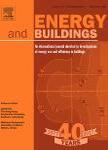版权所有:内蒙古大学图书馆 技术提供:维普资讯• 智图
内蒙古自治区呼和浩特市赛罕区大学西街235号 邮编: 010021

作者机构:Carnegie Mellon Univ Sch Architecture Pittsburgh PA 15213 USA Univ Nebraska Lincoln Coll Architecture Architecture Program Lincoln NE 68588 USA
出 版 物:《ENERGY AND BUILDINGS》 (Energy Build.)
年 卷 期:2025年第331卷
核心收录:
学科分类:0820[工学-石油与天然气工程] 08[工学] 0813[工学-建筑学] 0814[工学-土木工程]
基 金:U.S. General Services Administration (GSA)
主 题:Economizer control logic Indoor air quality Energy savings Fault detection and diagnostics Performance enhancement Net-zero energy
摘 要:This review analyzes documented benefits of economizers for energy performance and Indoor Air Quality (IAQ) enhancement in commercial buildings, including control logic, energy savings, IAQ potential, faults, and performance enhancements. Findings indicate that existing control logics primarily focus on energy, with differential enthalpy plus differential temperature (DE + DT) methods operating most effectively, assuming no faults. The energy-saving potential varies by system type, with VAV systems achieving 6-27% savings compared to 1-15% in CAV systems, though efficiency reduces in very cold and hot humid climates. Studies demonstrate significant IAQ improvements, including ventilation rate increases from 2.5 L/s to 10 L/s per person, CO2 reductions up to 180 ppm, and formaldehyde reductions of 38%. Common economizer faults include stuck dampers increasing cooling energy consumption by 37% and sensor failures resulting in peak loads 81% greater than systems without economizers, with modern fault detection and diagnostics (FDD) achieving 90% accuracy for major faults. Economizers combined with enhancement technologies show promising results: channel air blender capable of maintaining 30% outdoor air even when the temperature is between 15 degrees F and 30 degrees F (-9.4 degrees C to-1.1 degrees C). Thermal wheel systems achieve 4.9-7.7% additional energy savings, while integration with demand control ventilation (DCV) enables HVAC energy reductions of 28-79% in VAV systems. Lastly, filters can reduce indoor PM2.5 concentrations to meet WHO standards while only marginally impacting energy consumption (0.650.8% increase). Most economizer studies to date are simulation-based, highlighting the need for field studies to test new control logic, assess real-world energy, IAQ, and human health potential, ensure robust FDD for fault reduction, and explore performance enhancement to achieve Net-Zero Energy (NZE) goals in buildings.